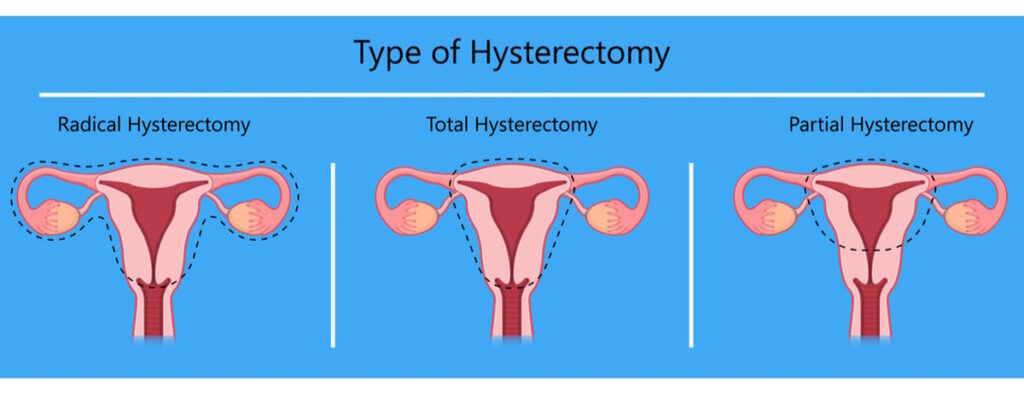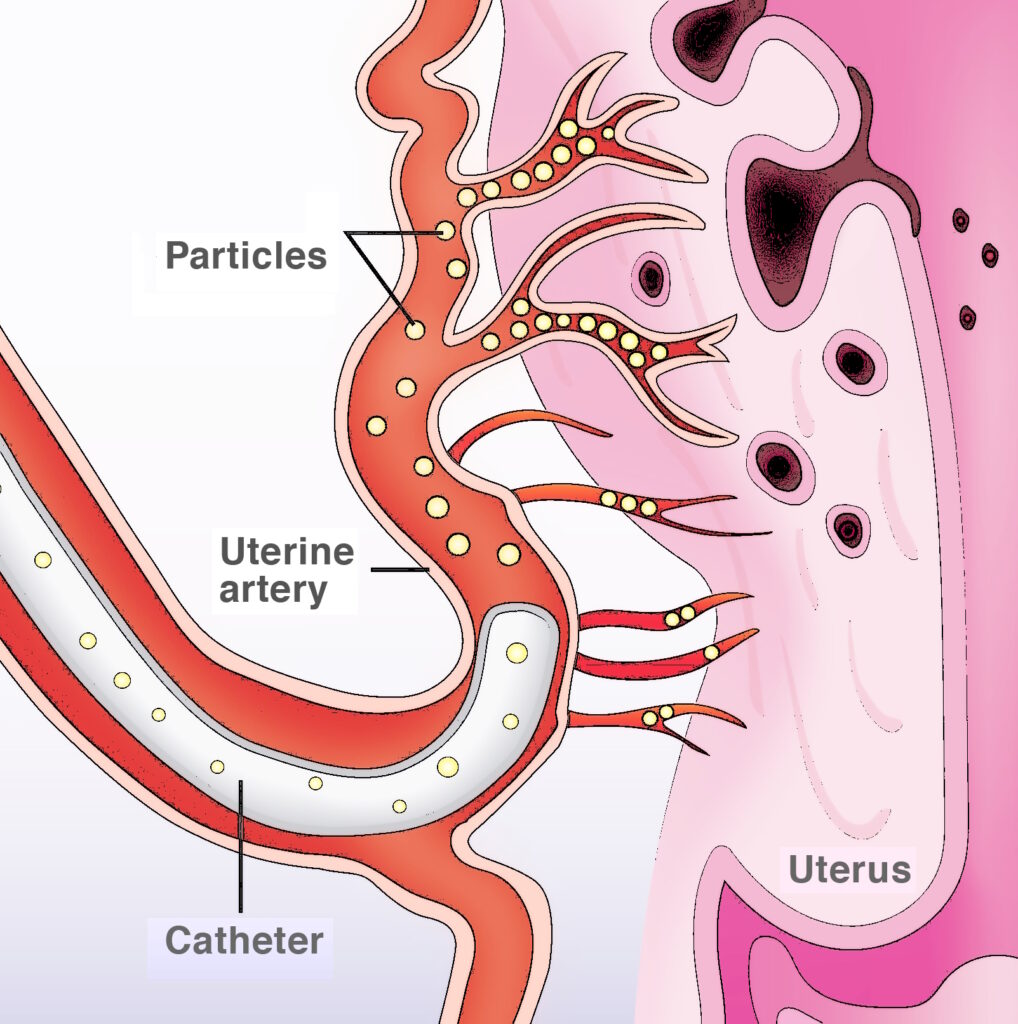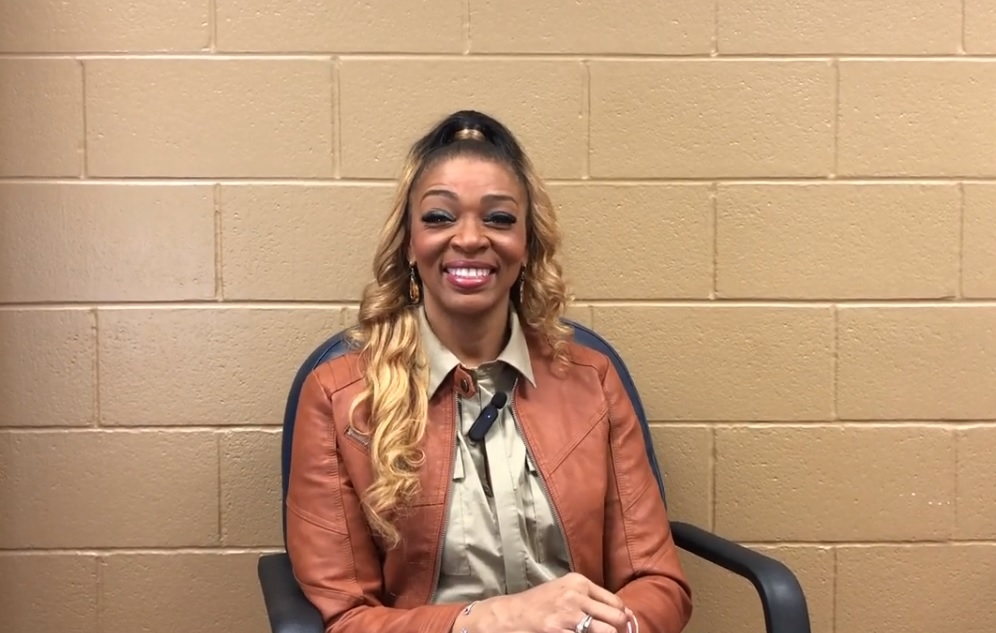Carla* remembers the unbearable pain crashing down on her in waves throughout the day. One minute it was heavy menstrual bleeding, lower abdominal pain, and back pain. The next, it was all of that, plus difficulty sleeping from unrelenting night sweats. She couldn’t exercise or walk for long periods; sex was also painful. It was over two years of pain before she saw a doctor and was diagnosed with fibroids. Ironically, it was her sweet mother who finally convinced her to see someone. Her mom had a hysterectomy at 32, and though Carla was now in her 50s, it was feared that she was headed down a similar path. But Carla wanted her journey to be different.
Carla’s Fibroid Symptoms
- Heavy menstrual bleeding
- Lower abdominal pain
- Back pain
- Difficulty sleeping
- Night sweats
- Unable to exercise or walk for long periods
- Painful sex
When it was confirmed she had uterine fibroids—one was the size of a four-month-old fetus, and several more were the size of lemons and limes—the first gynecologist immediately recommended a hysterectomy. The second gynecologist said the same thing. As Carla said, “I was over 50, and I remember the second doctor asking me, ‘What’s stopping you from having a hysterectomy?’ I said it was my body. I didn’t want major fibroid surgery. I was previously in the medical field, so I was all about getting more opinions and finding an alternative.”
Is There Fibroid Treatment Other Than A Hysterectomy?
Carla was committed to finding a solution to her fibroid pain that wasn’t a hysterectomy, a surgical procedure that removes all or part of a woman’s uterus and, in some cases, the fallopian tubes and ovaries. For years, hysterectomies were seen as the gold standard for fibroid surgery. Today, approximately 600,000 of these procedures are performed annually in the United States. By the age of 60, one in every three women will have had one.

There are three types of hysterectomy procedures.
- Total hysterectomy — This type of hysterectomy removes all of the uterus, the cervix, and possibly the fallopian tubes and ovaries. Candidates typically have fibroids embedded in multiple areas or have a threat of cancer.
- Partial hysterectomy — Only part of the uterus is removed, and possibly the ovaries. The cervix is left intact, but the patient still will not have the ability to bear children.
- Radical hysterectomy — This is reserved for cervical or uterine cancer. It involves removing the uterus, the cervix and its surrounding tissue, and the upper part of the vagina. The fallopian tubes and the ovaries may be removed.
While having a hysterectomy can improve symptoms and may be the best course of action depending on a woman’s unique situation, that isn’t the case for every woman. According to a study published in the American Journal of Obstetrics & Gynecology, as many as 1 in 5 women in the United States whose doctor recommended a hysterectomy don’t need one. Many of those women weren’t even told they had alternatives and how drastically a hysterectomy affects their bodies. The recovery time can be six weeks or longer. And because there is no uterus, having children in the future isn’t an option. Besides the reproductive limitations, a hysterectomy can also lead to:
- Changes in sexual feelings or sensations
- Menopausal symptoms
- Hormonal changes
- Higher risk for heart disease, bone loss, and urinary incontinence
- Depression over loss of fertility and body changes
Carla broke down in tears at the thought that her only option was a hysterectomy. But in that moment, she said her gynecologist said she knew someone who performed a minimally invasive procedure called uterine fibroid embolization (UFE) that could shrink her fibroids rather than cut them out or require a hysterectomy. The doctor wasn’t sure if Carla would qualify as a candidate but suggested she look into it before firmly committing to fibroid surgery.
“That evening, Dr. Suzanne Slonim called me from her personal cell phone,” Carla said. “I remember thinking, ‘Wow.’ I had never experienced something like that before. She set me up for a pre-evaluation and consultation. I had an MRI, and they confirmed that I was a candidate for UFE within a matter of two weeks.”
UFE Is An Alternative to Fibroid Surgery
UFE is not surgery. It is a minimally invasive fibroid treatment that stops the blood flow to the fibroids. Using image-guided interventional radiology, experienced fibroid doctors at the Fibroid Institute insert a tiny catheter through a small nick in the wrist. Small particles are led through the catheter to the fibroid vessels, forming a barrier to the fibroids’ blood supply. As a result, fibroids shrink and die, greatly reducing or eliminating symptoms.
While other treatment options such as Acessa and Endometrial Ablation exist, studies consistently show that UFE is the best way to treat all fibroids at the same time—regardless of size and location. The procedure will last about one hour. You will be given medicine to help you feel sleepy and comfortable during the process. You can resume light activities as soon as you feel up to it.
Most women return to work within 7 days. More than 90% of women notice an improvement in symptoms following uterine fibroid embolization. Reduced pelvic pain and lighter menstrual cycles are the most common outcomes.

Additional UFE advantages at Fibroid Institute include:
- Expert fibroid doctors at Fibroid Institute are 100% dedicated to fibroids and UFE
- Patient-centered care, from consultation to pre-authorizations through follow ups
- UFE costs less and is covered by most insurances
- No hospital stay
- Tiny wrist puncture, no need for vaginal access
- Short period of recovery
- Over 90% effective in reducing symptoms
- Procedure typically completed in under an hour
- Tiny wrist puncture, no need for vaginal access
- Avoid side effects of pharmaceutical hormone therapies
- All fibroids may be treated at the same time
- No incision, which means no surgical scarring
Click here to read more about Fibroid Institute’s unique protocol that helps patients experience little to no pain when they follow the recommended medicine chart.
Seeking another opinion was the right choice for Carla. Her procedure happened on a Friday and took about an hour. By that following Monday, she was back at work with minimal discomfort.
“I got my life back,” she said. “I lost 60 pounds from the excess weight and hormonal issues I was experiencing. I just want to tell other women out there that it is important to check it out and see what is wrong. More importantly, don’t let any doctor tell you what your procedure should be. Get second opinions.”
Our Fibroid Experts Provide Alternatives to Hysterectomy
At Fibroid Institute, we are dedicated to educating and empowering women on fibroid treatment options. With multiple locations, our Houston and Dallas fibroid centers help thousands of women avoid fibroid surgery but find relief from their fibroid symptoms. Our fibroid doctors are board-certified interventional radiologists and experts who are passionate about helping women.

With each UFE procedure, patients quickly realize they don’t have to be limited by fibroid symptoms or lengthy recovery times. For many women with fibroids, the UFE procedure changed their lives. Meet some of these women here:
Request a free 10-15 minute phone screening to determine if you are eligible. After the screening, if you qualify for UFE, you can schedule your onsite or telehealth consultation. Most major medical insurance providers cover the cost of UFE. Call Fibroid Institute Dallas at 214-838-6440 or Fibroid Institute Houston at 713-903-3733 or complete the form below.
"*" indicates required fields
Fibroid Institute Texas serves the Dallas and Houston areas including Addison, Carrollton, Plano, Frisco, Craig Ranch, McKinney, Allen, Fort Worth, Grand Prairie, HEB, Arlington, Hutchins, Irving, Duncanville, DeSoto, Cedar Hill, Lancaster, Cockrell Hill, Highland Park, University Park, Park Cities, Garland, Mesquite, Richardson, Dallas, Sherman, Houston, Sugar Land, Katy, Webster, Clear Lake, The Woodlands, Universal City, Spring, Kingwood, Stafford, Conroe, Texas City, Cypress, League City, Bellaire, and more.
*Patient stories are true. Names and/or photos may be changed to protect patient confidentiality.
This information is not a substitute for professional medical advice. Prior to starting any new treatment or if you have questions regarding a medical condition, always seek the advice of your doctor or other qualified health provider.

